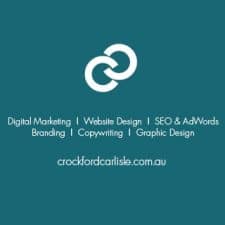Here’s how to understand your sales funnel numbers
The story so far...
You have a good product or service offering. You have a great sales team. And you want more qualified leads to keep them busy.
Your website obviously plays a role in this, and you want to get things fixed so that your flow of leads increases each month.
So far, so good.
The next question is: if you are going to get more qualified sales leads from your website, where should you focus your efforts?
Faced with the deluge of emails offering to “Get you to number one on Google”, it is understandable that you might think SEO is your answer.

After all, if you are ‘high on Google’, you’ll get more qualified leads, right?
Well… perhaps…
True, in many cases, more traffic is what’s needed. And if that’s what your numbers show, then that’s where we’d get busy — using our SEO expertise to increase your traffic.
However…
As we talked about in this 60 second video, (Want more leads from your website? SEO may not be the answer), while “Getting More Traffic” may seem to be the most pressing need, you actually have to look at the whole picture to see:
- What problems are causing you to miss out on qualified leads, and
- Where your opportunities are to see the best ROI.
From there, you can decide on your priorities and plan of attack.

And while SEO is nearly always part of your plan of attack, we have to remember that it is only one component of Inbound Marketing.
With some websites, analysis of the funnel shows that it makes more sense to:
- Put some initial effort into Conversion Rate Optimisation (CRO) to improve your lead flow from the EXISTING traffic — and from there
- Move on to SEO.
So, in this article, let’s help you figure out what’s best in your situation.
Inbound Marketing is a stage-by-stage methodology
One of the great things about Inbound methodology is that it helps you to break things down into chunks. This lets you identify the problems and opportunities.
Looking at the big picture, your Inbound Marketing funnel has four stages:

- Attract — bringing people to your website
- Convert — getting people into your lists with landing pages and offers
- Close — nurturing them to the point of being a sales qualified lead
- Delight — generating opportunities for repeat and referral business
This understanding is important. It helps you break down the “We need more qualified leads” elephant into bite-sized chunks that you can manage.
It also lets you see how you can use Inbound methodology to see WHERE you need to focus, to get the best leverage from your investment in marketing.
To learn more about how Inbound Marketing works, we recommend you download and read our free Explainer. Just click the link below:
Here’s an example of what we found when analysing a website’s performance
One of our clients came to see us and began the conversation by talking about SEO, and how they needed our help to increase their traffic.
When we looked at the monthly numbers, at first glance they were right.
Given their wide range of products and their market, their traffic was indeed low and could have been a lot better.
At that time, they were getting:
- 2,108 Organic visits
- 918 Paid visits
- 374 Direct visits
That’s a total of 3,400 a month.

However, looking back up this page to the Inbound Marketing diagram, you can see that this data was ONLY about the first stage, which is the ‘Attract’ stage.
The next step is to look at the “Convert” and “Close” stages, to see what was happening to that traffic after it arrived at the site.
Next, we looked at the visit to lead ratio, and…
Those 3,400 visits had produced 85 enquiries, which gave a visit to lead ratio of 2.5%.
Not too shabby.
However, they are a B2B business with a specific target market.
So, when we pulled out the tyre-kickers and unwanted enquiries from the domestic sector (which they don’t service), there were only about 20 qualified leads each month, which meant that the ratio was more like 0.6%.

Hmmm…
Although many businesses are happy with a 0.6% visit/lead ratio, that’s WELL below what we’d normally expect to produce for our clients, who typically enjoy a much higher output.
With this particular website, we figured that if we could get that ratio up to, say, just 1%, then they would get 35 qualified leads a month from the SAME traffic.
Given that their average sale was around $3,200, that was potentially an extra $48,000 of revenue a month IF they closed them all.
And even if their sales team’s close rate from a qualified lead was around 50%, that would be $24,000 a month ADDITIONAL revenue, from the SAME traffic.
In reality, twelve months later, after we have implemented an Inbound campaign using HubSpot’s Marketing Automation, those SAME visits are now producing 40 qualified leads, which has improved our client’s visit to lead ratio to 1.2%
Happy days!
With that sorted, NOW let’s look at SEO to get more traffic into the funnel
It is important to remember the other great long-term benefit with this approach.
To generate that 1.2% conversion rate, a whole range of ‘digital assets’ have been produced over the last 2 months, such as:
- Landing pages
- CTA’s
- Premium content
- Thank you pages
- Nurturing emails

Now that all these assets are in place, they STAY in place — and continue to perform as the traffic through the funnel builds.
So, as we turn our attention to SEO and build up the volume of site traffic, that established 1.2% visit/lead ratio means that the number of qualified leads being produced will steadily climb — thus giving an increased ROI from the client’s investment in marketing.
A quick call to help you think things through
If you are wondering where to start with your site, please give us a quick call and we can have a look at things with you.
It’ll take about 10 minutes to check through your site with you, dig in a little to discuss the existing opportunities and to look at the best, most efficient way to get more qualified leads for your sales team to work with.
No matter where you are in Australia, we are happy to help on (07) 3891 3800.
Very often, just a few minutes can unearth some absolute gems of opportunities — easy wins that can make a profound difference to your monthly sales.


















